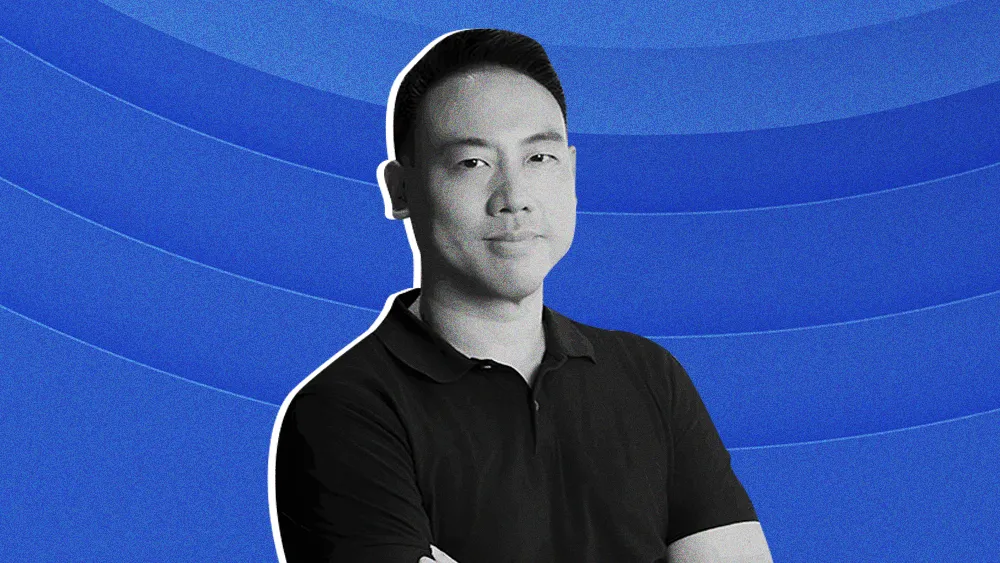
Key Points
Healthcare's resistance to change is challenged by AI. Patients and physicians are rapidly adopting digital tools, revealing a strong demand for improved healthcare experiences.
But implementation is hindered by data silos, costly integration, and regulatory concerns.
Andrew Ray of Ensemble is focused on redesigning processes over layering technology to address financial and operational pressures.
In an interview with CIO News, Ray advocated for a holistic redesign of healthcare administration, focusing on patient, physician, and insurer interactions
Healthcare is among the most change‑resistant industries. And for good reasons: patient safety, heavy regulation, complex workflows, fragmented incentives, and entrenched legacy systems all slow adoption. Hospital systems are managing thin margins, staffing shortages, and rising payer denials while operating within long budgeting, compliance, and procurement cycles. In this context, interest in AI is high, but implementation is challenging. Data is siloed and inconsistent; integration with EHRs and existing tools is costly; privacy, security, and liability require strong governance; and clinicians expect clear evidence, transparency, and fit within daily workflows. Training, change management, and ongoing monitoring add further load to already stretched teams, and many initiatives stall in pilots, or fail to reach scale. Organizations that make progress start with process redesign and operating-model changes, set measurable outcomes, and integrate AI into end-to-end workflows rather than layering tools on top of legacy systems.
We spoke with Andrew Ray, the Chief Innovation Officer at Ensemble. Ray is explicitly focused on process redesign and operating-model changes to support healthcare organizations struggling with solving the challenge of AI integration and implementation. Given his position within Ensemble, the intersection of technology and operations, he understands how each traditional silo approaches the challenge areas illustrated above and how they impact patient care. Drawing on his experience in financial transformation at McKinsey & Company and leading revenue cycle operations at Stanford Children's Health, Ray argued that the path to real AI results requires a fundamental shift in the relationship between culture, mindset, and technology.
Trash the transformation playbook: Ray is clear that technology alone doesn’t drive transformation; process redesign does. "It’s not enough to bolt new tools onto legacy systems and call it innovation," he said. Ray's philosophy for change centers on using technology as a catalyst for re-engineering workflows and empowering people to work smarter. “We view technology as a way to reinvent processes and elevate teams, not just patch over what’s already there, even if those systems once worked well,” he added.
For Ray, the push for AI-driven transformation isn't a theoretical exercise; it's a direct response to a crisis. The financial and operational pressures on healthcare providers have created an environment where standing still means falling behind, fast. The core mission is to use technology to fight back against forces that are eroding provider stability.
The unsustainable crisis: "Historically, initial denial rates from insurance companies were like 8%, then they went to 10%, now they're up to 12% to 15%," Ray explained, "That's unsustainable." Rising initial denials mean that roughly one in seven claims is rejected on first pass. Even when many are ultimately overturned, each denial delays cash by weeks or months, increases the cost to collect, and ties up working capital. For a hospital with $1B in net patient revenue, moving from 8% to 12–15% initial denials can place an additional $40–$70M into rework at any moment; a small portion that never gets recovered can wipe out already thin margins.
Beyond financial impact: The consequences of increased denial rates extend beyond finance, forcing clinicians to spend more time on documentation and appeals. As a result, patients face delayed scheduling or unexpected bills, and community hospitals with limited reserves face service cuts or consolidation. From Ray's perspective, any AI strategy that doesn’t measurably reduce initial denials, accelerate clean-claim submission, and shorten days in A/R will struggle to demonstrate real impact.
Leveling the playing field: These financial and social pressures are compounded by a technology imbalance. "Insurance companies are well ahead of providers in deploying AI and technology. And so the pain of denials is overwhelming providers," Ray said, "So we're seeing it as a means of how do we kind of level the playing field back to where we were a couple years ago and then hopefully we start to get ahead of that."

The solution, Ray argued, is not to chase shiny objects, but to commit to a holistic redesign. This starts with breaking down the traditional, fragmented structure of healthcare administration. Instead of optimizing dozens of small, disconnected tasks, his vision is to rebuild the entire architecture around three core interactions.
From silos to buckets: "If you look at the historical revenue cycle function, it's between 12 and 15 silos. We're looking at it now as three buckets of how we interact with patients, how we interact with physicians and clinical data, and how we interact with insurance companies," Ray said. By implementing this framework, Ray argues it doesn't really matter that teams have all these functional tasks to do. AI and technology allow every stakeholder to function in a more efficient, and effective way by having tools and workflows that integrate with one another.
The ‘top of license’ ROI: This system redesign changes the entire value proposition of automation and AI implementation. The goal shouldn't be to just eliminate tasks, but to elevate our human expertise. Ray is seeing this play out in real time, sharing, "We’re enabling staff to work at the top of their license. Instead of handling 50 mixed routine tasks a day, we streamline their workload to about 20 — the most complex, high‑value items that truly require their expertise."
Respecting the investment: Ray’s strategy is deliberately pragmatic with the primary goal of extending the ROI of $100M+ investments into clients’ core platforms, Epic and Cerner, rather than disrupting them. In his view, "Our goal isn’t to bolt something on but to integrate AI and automation seamlessly, so the core continues to serve as the organization’s single source of truth."
Respecting the investment: Ray’s strategy is deliberately pragmatic with the primary goal of driving ROI of Ensemble’s $100M+ technology investments in a three-prong strategy. Ensemble first maximizes the capability of client core EHR systems to maximize client investments in these systems, then orchestrates RCM intelligence across the revenue cycle with Ensemble's EIQ (TM) platform and finally through partnerships with leading technologies from Microsoft, Cohere and Solventum. In his view, "Our goal isn’t to bolt something on but to integrate AI seamlessly into core systems and care delivery to drive performance and patient experience."
Of course, this kind of change is difficult in an industry known for being a "follow-the-leader" culture that is historically slow to change. Ray acknowledged that overcoming this inertia, and improving healthcare in today's tech-led environment, requires building trust and proving results. The key is to score early, measurable wins, which shifts the internal conversation from cautious skepticism to urgent demand.
From skepticism to demand: "As we’ve started deploying solutions and seeing measurable improvements in performance, whether that’s patient engagement, efficiency, accuracy, or integration with existing systems, client and operational teams' attitudes are shifting dramatically," Ray said. In his experience, initial skepticism has given way to urgency as clients witness tangible performance gains. Rather than evaluating theoretical benefits, they’re now experiencing firsthand how the technology amplifies existing investments and streamlines complex workflows. The result, Ray shared, "is a decisive shift in attitude from 'will this work?' to 'how soon can we have it?'
A new standard for quality: Ray explained that AI is redefining what quality assurance actually means. In the traditional model, supervisors might manually review a small sample of 100 accounts, spot a few errors, and declare a 97% success rate. “That approach hides more than it reveals. With AI, teams can now analyze 100% of cases in real time, training models to continuously detect and improve quality," he explained. This represents a shift from selective oversight to full transparency and a fundamentally higher bar for trust.
Ultimately, the most powerful validation for this performance-driven approach has come from an unexpected source: the patients themselves. While many organizations worried about adoption, Ray’s experience revealed that both patients and physicians are embracing digital tools faster than anyone anticipated, revealing a massive, underestimated demand for a better healthcare experience.
A surprising demand: "One surprising finding is how much positive feedback we get from patients. Our customer satisfaction results have gone through the roof from having more digital tools and more ability to self-service," Ray said. Patients are responding to the freedom and flexibility these tools provide, using them on their own schedules and taking greater control of their healthcare. The response reveals a massive, underestimated demand and a clear opportunity to modernize the patient experience.
Ray’s work and commentary underscores a simple truth that healthcare transformation isn’t about implementing the latest technology, it's about reimagining how care works across every level of a healthcare organization. By redesigning processes, integrating AI thoughtfully, and empowering people to work at the top of their license, organizations can not only survive the current pressures but actually deliver a better experience for patients and providers alike. As Ray’s experience shows, when technology aligns with real human needs, the results speak for themselves: faster adoption, higher satisfaction, and a healthcare system finally aligned with modern expectations.
.svg)



.webp)

